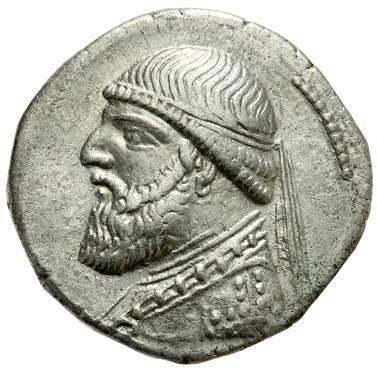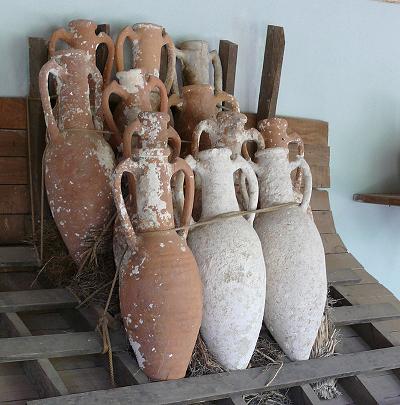EVIDENCE
I CAN CHANNEL THE ROMANS!
I remained skeptical and not emotionally invested in the channeling, expecting to find out that the channeling is based on imagination and expectations. However by now I have encountered sufficiently with evidence and am fully convinced that the channelings consist of genuine conversations with the spirits of Ancient Romans. Here is a list of some of the evidence. I will also prepare a different list for things I have encountered in the channelings, which would point to the opposite, that the channeling would be false. Here is a list of evidence in favor.
A DIFFERENT MITHRIDATES
Mithridates was mentioned heavily in Tom Holland's book "Rubicon" which I was reading when Pompeius Magnus had come to visit me in spirit. When I made contact with Roman spirits, I chose to also contact this Mithridates. The book "Rubicon" I think also had some pictures of this Mithridates, a man who was not a Roman but who fought many battles with the Romans.
And so I set out to channel Mithridates. I was disappointed when the man whose spirit answered the call, and who responded to the name Mithridates, was by no means right. I had expected the young man who wears a big cat's hide on his head. I listened to the fellow, wrote down his words, and concluded to myself that my channeling doesn't work at all, because it was all wrong, a completely wrong person.
Later I did an internet search for pictures of Mithridates VI of Pontus whom I had meant to channel, even though what I had achieved was rubbish and completely wrong. What do I see then, among the many images of the intended Mithridates VI of Pontus who wore the cat's hide on his head, I see one picture that is different and I gasp - this is the man who talked to me! I click on that image and find out that the man in this image that is a match, he is Mithridates II of Parthia! A different Mithridates!
The resemblance on these coins of Mithridates of Parthia is completely precisely the exact same man who had answered my "channeling phone call" which had reached out to just "Mithridates". Turns out there were more than just one Mithridates, and I had gotten a different one. That exact same man, black hair, large eyes, big nose, black full beard, and the blue bandanna around his head. Why is this evidence that my channeling works?
1. My channeling is not expectation based imagination, because if it were, then I would have imagined the expected young man Mithridates of Parthia with the cat's hide on his head, no question about it, it would have been easy to see him just as I had expected to. 2. I was willing to declare that my channeling doesn't work, when I saw the other man, it means that I am honest to spotting any flaws, I was ready to throw in the towel (and I would have, had I not come across the coin of Mithridates of Parthia). 3. Not only was I lucky to stumble upon the exact image of the man who had answered the call, his name too was Mithridates, so it was right. The man I had seen was a real person who lived, I had seen him correctly, and his name was Mithridates.
I find older notes on this Mithridates dilemma, where I had written:
" I wanted to contact the spirit of Mithridates VI of Pontus, archnemesis of the Romans. Indeed, a man came to talk whose name was Mithridates. He was short with black hair and a black beard, round nose and large brown eyes, he wore a blue bandanna on his head. While he spoke I had the feeling that this wasn't him. So when only after the conversation I looked up pictures of Mithridates VI of Pontus to see images of him for the first time, I concluded that my channelings are bogus. It was not the right man.
Only then I happened to scroll further to find the perfect match of the man I had seen! Coins depicting not Mithridates VI of Pontus, but Mithridates II of Parthia, black beard, blue bandanna and all! To me this is somehow a piece of evidence that the channeling might be real. I mean, if you make a phonecall asking for "Mithridates", who's to say how many men by that name there were? "
HORTENSIUS AND HORTENSIA
I found Hortensia on a list of Roman women, and had only her name "Hortensia", a painting of her and that she was an orator to go by. Obviously I was expecting her to talk about being an orator. Instead she started with the most unusual topic of telling me how she painted trees with a wolf and "birdies" up in the tree. She dedicated the conversation to the curse by god Mercury which had made her family sonless. When I contact her father Hortensius in a channeling, he strictly dedicates the conversation to the curse by god Mercury which made the family sonless.
I expected all Roman families to have had something like 10 children each, with lots of sons since they seem to appreciate sons so much. I had no expectation that any Roman family, and least of all a noted family like Hortensius and Hortensia, would have been sonless (or that it would have been such a big deal). Sure enough, a check of historical records reveals that both Hortensius, and his daughter Hortensia, had no sons. The husband of Hortensia even adopted a boy into the family, Marcus Junius Brutus.
When I channeled Hortensius I saw clear images of him, and his appearance matched perfectly with this image of a bust made of him, find the image here. In this bust, and also when I saw him in spirit, he looks strong and stern like a military leader. Expectation-wise I would have expected him to look like what I assume an orator would look like, like someone scrawny, like an office worker.
NERO
I knew nothing of Nero when I embarked on our first conversation, other than that "everybody knows he murdered family members and was crazy". Instead, this very gentle and sweet young man came to talk. Indeed, he talked about divorcing a barren wife and having "magical potion makers". In one channeling of Nero, not published yet, Nero tells us the truth about who actually killed his stepbrother Britannicus.
AMPHORAE URNS
Images of strange urns appeared during my channeling of Ancient Romans, depicting impossible urns that were dark brownish red in color, had two large handle ears on the top on either side, but a long pointy tip. These urns could not stand on their own, and in the images I see Romans either storing them under the deck panels on boats, sticking the pointy end into sand which holds it upright, but most of the time they are placed leaning against a wall.
When I saw images of these urns in the channeling, I told myself that my channeling must be nonsense, the pointy tip of an urn that cannot even stand was completely impossible. Yet sure enough, these were commonplace urns throughout Ancient Rome and Ancient Greece, they are called amphorae. Had I known about these urns then my mind could have been at ease with seeing them. This is one piece of evidence that started to tell me that the channelings are real.
MALE LOVERS
From what little I thought I knew of the Great Romans when I embarked on interviewing them I assumed the likes of Sulla and Julius Caesar to have been "real manly men" and "womanizers". Surely Julius Caesar would have been head over heels in love with his Cleopatra and nothing else. Instead to my utter surprise both men confessed to having homosexual preferences. I couldn't have made that up myself. Contrary to expectations, I find in my channelings that homosexuality among men was commonplace.
"Mithridates VI Louvre" by Sting - Wikimedia Commons. Licensed under Creative Commons Attribution-Share Alike 2.5 Generic - https://commons.wikimedia.org/wiki/File:Mithridates_VI_Louvre.jpg
"Drachma Mithradates II" by dynamosquito - Flickr: Drachma Mithradates II The Great. Licensed under CC BY-SA 2.0 via Commons - https://commons.wikimedia.org/wiki/File:Drachma_Mithradates_II.jpg#/media/File:Drachma_Mithradates_II.jpg
"Amphorae stacking" by Ad Meskens - Own work. Licensed under CC BY-SA 3.0 via Commons - https://commons.wikimedia.org/wiki/File:Amphorae_stacking.jpg#/media/File:Amphorae_stacking.jpg

Mithridates VI of Pontus, see credits at the bottom
Mithridates II of Parthia, see credits at the bottom